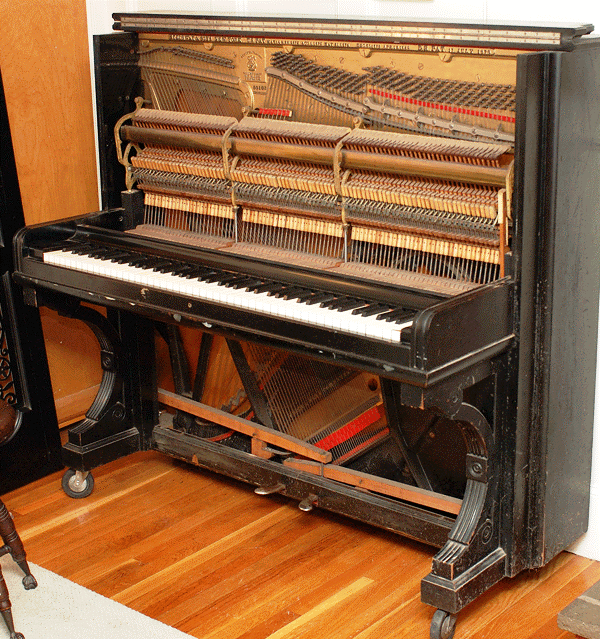 | Reconditioned
Pianos |
Reconditioning means making the original parts workable rather than replacing them. While some
pianos are clearly in such deplorable condition that only complete rebuilding will suffice, other
pianos can be just reconditioned. The average old upright or grand can require several hundred
dollars in repairs to return it to playable condition.
Some reconditioning steps might include the following:
- Reshape the hammers (removes string groves and restores the tone)
- Tighten all action screws and align parts (removes clicking noises and solidifies tone)
- Pitch raise the piano to A:440 (brightens the tone and loads the plate and frame)
- Re-glue or replace miscellaneous broken action parts
- Twist the bass strings (tightens the outer winding against the inner core bringing them to life)
- Partial or complete regulation of the action (improves the feel and response of the action)
- Adjustment of the pedals (remove lost motion and lubricate or add felt to remove squeaks)
- Replace the bridal straps (so an upright piano action can be readily removed for repairs)
- Clean the interior and exterior (to enhance the appearance and clear action of debris)
- Clean the action parts with Protek (to free sticking or sluggish action parts)
- Epoxy the bridge pin holes (if there is any cracks running from pin to pin)
- Install larger tuning pins (if only a few tuning pins are loose but otherwise the
pinblock holds)
- Replace individual defective damper heads (if a few notes continue to sound after playing)
For more information e-mail:
garynbrownfield@comcast.net

